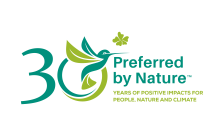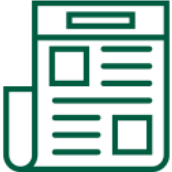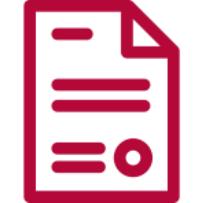Timber Risk Score: 18 / 100 in 2017. The Timber Legality Risk Assessment contains an evaluation of the risk of illegality in Guatemala for five categories and 21 sub-categories of law. We found:
- Specified risk for 14 sub-categories.
- Low risk for 3 sub-categories.
- No legal requirements for 4 sub-categories.
This page provides an overview of the legality risks related to timber produced in Guatemala.
Guatemala has approximately 3.5 million hectares of forest covering almost one third of its total land area. Most of this forest is found in Petén, which accounts for 1.8 million hectares or 48.4% of the national total.
Natural or naturally regenerated forests account for 95% of the total forest area while the remaining 5% are plantation forests. Over half of the forest area is protected (FAO, 2015). The forestry sector contributed USD 462.4 million to the economy in 2011, which is approximately 1.0% of the GDP (GFW, 2017).
A large part of the natural forest estate in the highlands has been over-harvested, and development is proceeding rapidly in the Petén. The annual rate of deforestation was 1% for the period 2010-15 (FAO, 2015). Illegal logging is a widespread problem in the country and it has been estimated that it represents 30-50% of the annual harvested timber (PROFOR, 2017).
Legality risks in Guatemalan timber supply chains are wide-ranging and relate to legal rights to harvest, taxes and fees, timber harvesting activities, third parties’ rights, and trade and transport. If you are sourcing timber from Guatemala you should take care to ensure the risks identified are not present in your supply chains, or have been sufficiently mitigated.
Score: 25 / 100 in 2021
Rank: 150 out of 180 countries in 2021
Exports of logs of more than 11 cm in diameter are banned, unless they originate from plantations. Ban does not apply to furniture and processed products made from wood. Guatemala established a national red list of trees to protect in 2006. The 81 species in Category One are banned from export and commercial uses.
There are currently no armed conflicts in Guatemala according to the Council on Foreign Relations' Global Conflict Tracker
FSC Certified Forest Area: 504,875 hectares (4 December 2019).
Information Gathering
Timber sources
- Find out the different sources of legal timber
- Determine which source type your timber comes from
| Timber source types | Description of source type |
|---|---|
|
Protected areas |
Timber from community and industrial natural forest concessions in protected areas – Multiple Use Zones in a Biosphere reserve. The land is government owned and jointly administered by community (90%) and industry (10%) via a concession system. A permit for harvesting and trading wild timber products is required. Timber from Municipal Communal Farms (ejidos) and lumber yards. The land is managed by the municipality under INAB (Instituto Nacional de Bosques) and consists of forests located in the National System of Protected Areas (Sistema Nacional de Areas Protegidas – SIGAP). A forest permit is required. This is one of the less frequently used categories in Guatemala. Timber from plantations in a protected area. Landholdings are in the General Property Registry (Registro General de Propiedad) and are privately owned and managed under CONAP (Consejo Nacional de Áreas Protegidas). A permit for harvesting and trading wild timber products is required. Timber from private plantations in the possession of individual owners inside a protected area. Plantations located on landholdings that are not registered in the General Property Registry are considered national government lands in the possession of individuals (only applies to areas less than 15 hectares). Managed under CONAP, a permit for harvesting and trading wild timber products is required. Timber from agroforest systems located inside a protected area. Privately owned and managed under CONAP. Consist of agroforest arrangements where a certain number of trees are present. A permit for harvesting and trading wild timber products is required. |
|
Non-protected areas |
Timber from agroforest systems located outside a protected area. Privately owned and managed under INAB. A forest permit is required. Timber from private plantations in the possession of individual owners outside a protected area. Managed under INAB. A forest permit is required. |
Risk Assessment
Risk assessment summary
|
Legal rights to harvest |
|
Taxes and fees |
|
| Timber harvesting activities
|
|
|
Third parties' rights |
|
Trade and transport |
|
Specified risk species
| Common/trade name | Scientific name | Risk information |
|---|---|---|
|
Guatemalan fir |
Abies guatemalensis |
CITES-listed |
|
Ayuque |
Balmea stormiae |
CITES-listed |
|
Cedar |
Cedrela odorata |
CITES-listed |
|
Rosewood |
Dalbergia spp. |
CITES-listed |
|
Guaiacum wood |
Guaiacum sanctum |
CITES-listed |
|
Mahogany |
Swietenia humilis |
CITES-listed |
|
Mahogany |
Swietenia macrophylla |
CITES-listed |
Risk Mitigation
Mitigate the risks in your supply chain
Learn which actions we recommended to mitigate the risks associated with the timber sources from Guatemala.
Source Certified Materials
NEPCon believes that third party certification (for example FSC and PEFC certification) can provide strong assurances of the legality of the products they cover. Companies seeking to mitigate the risks of sourcing illegal timber should seek to purchase third party certified materials wherever possible.
While the European Timber Regulation does not include an automatic “green lane” for certified products, it does recognise the value of certification as a tool for risk assessment and mitigation. The European Commission says that companies “may rate credibly certified products as having negligible risk of being illegal, i.e. suitable for placing on the market with no further risk mitigation measures, provided that the rest of the information gathered and the replies to the risk assessment questions do not contradict such a conclusion.”
For more information on using certified materials in your due diligence, including how to assess whether a certification system meets EUTR requirements, see the page on Certification and Due Diligence.
Mitigation recommendations
There are five recommended actions to mitigate the risks associated with the timber sources from Guatemala:
1. Fully map your supply chain
- Our supply chain mapping tool can help you do this.
2. Obtain and verify documents
- Land tenure documents:
- General Property Registration (Registro General de la Propiedad)
- Forest management and planning
- Management Plan approved by the competent authority
- Maps - Review maps that show the areas under management, boundaries and other geographic references
- Annual Operating Plan approved by the competent authority
- Authorisation process for FMP and AOP, review documentation reflecting the process of authorisation of the Management Plan and/or AOP, including technical field reports
- Commitment to Recovery - review commitment to recovery that has been legally established between the owner of the landholding and the State
- Forest Manager's Registration in the INAB
- Harvesting permission
- Formal File in CONAP or INAB - shows the authorisation process on which the endorsement for issuance of a licence is based
- Harvesting authorisation from by CONAP or INAB
- Tax related documents
- Accounting invoices – check the timber species, volumes and prices (depending on qualities) are correct, cross-check with the shipping tickets to ensure they match with regard to species and volumes shown
- Fee payment records – check they correspond with the approved volume and species
- Forest Tax payment receipts - verify monthly, quarterly or end-of-year payment of income tax (ISR) to SAT (depending on the regime in which the user is registered)
- Income Tax Declaration (ISR) to SAT, can be checked electronically
- Invoices - cross-check between duplicates of invoices issued and the report submitted to SAT
- Tax payment records - review payment of tax on the intrinsic value of timber to the oversight institutions (INAB or CONAP)
- VAT Declaration - consult the VAT declaration made to SAT electronically
- VAT Payment Receipts - verify monthly, quarterly and annual payment of VAT to SAT (depending on the regime in which the user is registered)
- Harvesting regulations
- Current Forest License for harvestings authorised by INAB
- Forest management plan
- Reports issued by the forest manager – should contain information on the degree of implementation of the Forest Management and transportation plan
- Authorisation to harvest in a protected area, must be endorsed by CONAP through its Manual for Forest Administration in Protected Areas
- License for harvesting and trading wild timber flora products in protected areas – contains authorised species, their volumes and the effective term of the document
- Environmental document – must be authorised by the Ministry of the Environment and Natural Resources (Ministerio de Ambiente y Recursos Naturales – MARN) for cases of forest management in protected areas. (This also applies to change in land use outside protected areas.)
- Reports issued by the competent institutions in forest matters to learn the degree of compliance with environmental protection measures
- Employment-related documents
- Carnet issued by IGSS - verify the existence of a carnet issued by the IGSS to beneficiaries of this insurance mechanism; or identify private mechanisms that comply with the legal rules for workers
- Labour contracts - verify that labour contracts between the employer and the employee comply with the rules established by law
- Trade and transport documents
- CITES license (for CITES species), see LEA list with regard to authorised licences
- Sales documents – check that products are correctly classified according to species, quantities, qualities, etc. in sales documents, customs declarations, shipping documents and other documents required by law
- Export License - review export and import licenses, which must be based on a file that meets the national legal requirements
- Review the supporting documentation that is the basis for obtaining an export licence - certificate of shipment inspection, shipping inspection ticket, CITES certificate (where applicable) and invoice
3. Consult stakeholders
- Neighbours of the property for which application is being made confirm the identity of the owner of the real property
- SAT Reference Office confirms details related to payment of income tax (ISR) or assessment of fines
- Institutions in charge of authorising licenses confirm the existence of technical reports that disclose the activities before, during and after harvesting
- The office of INAB and/or CONAP confirm the level of development of the Management Plan and compliance with it
- INAB confirms that existing and traded volumes are in accordance with the licences approved for a given industrial enterprise, and confirms findings uncovered by the institution for a given enterprise
- MARN Office in the region where the management plan operates confirms whether there are complaints about environmental impact by the authorities or neighbours
- CONAP'S Reference Office confirms the degree of respect for rules for the protection of species protected by CITES or a national list (such as the List of Endangered Species of Flora and Fauna in Guatemala – LEA)
- Employees involved in forest harvesting and/or transportation confirm:
- They are acquainted with measures for the protection of health and safety on the job, as well as identification of high risk zones and highly hazardous chemical products
- The ranges of wages of operators, which can be checked against the corresponding legislation (minimum wage), and visit the offices of the Ministry of Labour and Social Welfare (Ministerio de Trabajo y Previsión Social) in order to verify the existence of any complaints or lawsuits that have been entered
- The level of knowledge among operators about the existence of labour rights
- Worker training in health and safety mechanisms, and also in duly approved health and safety regulations
- Workers’ freedom to organise and to exercise their rights
- Oversight institutions for employment benefits confirm whether the personnel involved in forest operations receive the appropriate benefits
- Forest oversight institutions confirm the status of applications for forest harvesting on indigenous lands where customary rights are claimed
- Stakeholders, including indigenous leaders, on indigenous lands used for forestry confirm lack of disputes over lands with a forest vocation by communities with rights based on the political Constitution of the Republic
- Office of the Attorney General and/or Office for Human Rights confirms information about any land disputes
- INAB Single Contact Point for Timber Exports, which holds all export licences and their respective supporting documentation, confirms species, volumes and export prices
4. Carry out on-site verification
- Confirm compliance with the measures established by the environmental document for cases of forest harvesting in eligible management categories in protected areas
- Confirm protective measures for water sources, soil erosion, use of chemical products, transportation in the right seasons and other necessary environmental measures are followed in the field
- Confirm protection zones established in the Management Plan (forests, riverbanks, cultural protection zones, and nesting sites, among others) are respected
- Confirm that the volumes, species and location of the forest harvesting is in accordance with the licence granted
- Confirm harvesting is done within the boundaries of the management unit and applied to the properly authorised species
- Confirm harvesting complies with the Management Plan, especially with regard to minimum cutting diameters, species, volumes, seed trees, trees for future harvest and protected species
- Confirm via maps that the location of the management unit, the AOP and other geographic references are in accordance with the authorisation
- Confirm the role of the forest manager in the forest harvesting
- Confirm the legal principles governing health and safety are complied with in the field
- Confirm implementation of the use of personal protection equipment and measures for preventing work-related accidents
- Confirm that no minors are employed in the harvesting activity
- Confirm the intangible management categories in the Guatemalan System of Protected Areas (Sistema Guatemalteco de Áreas Protegidas – SIGAP) that are administered by CONAP are respected (especially for national parks)
- Confirm the process of acquisition and issuance of shipping waybills (in the case of authorisation by CONAP) or forest shipping tickets (in the case of authorisation by INAB)
5. Conduct targeted timber testing
- Conduct timber testing on samples of purchasd material to verify the species or origin of timber, where appropriate












